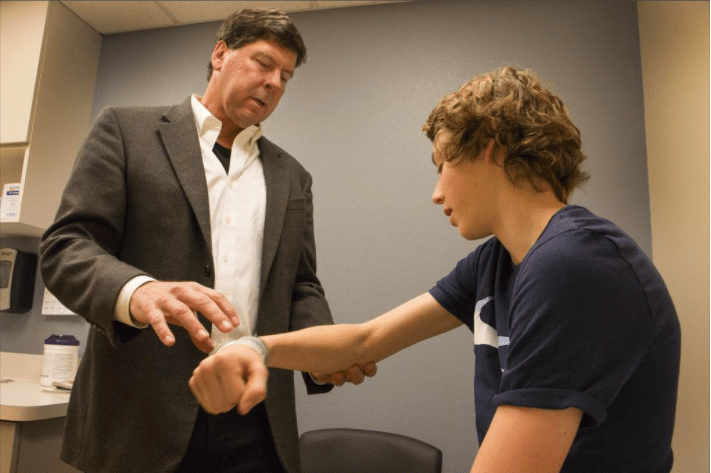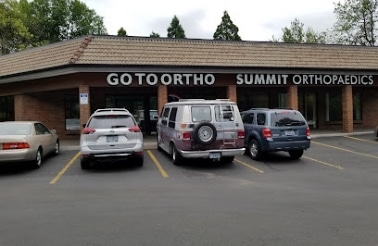While Go To Ortho currently has two clinics in Lake Oswego and Cedar Hills, Madey said his partners would like to grow organically throughout the Portland metro area, if the demand is there. At this point, they’re relying on growth through word of mouth.
“We’re giving access to specialized care in an expedited fashion at a reasonable cost,” Madey said. “Our clinic is not the type of thing you need every day, but when you need it, it’s really important. How you get treated really impacts the next three to six months of your life.”
Fractures and Sprains
Orthopedic urgent care may be rare in Portland, but such clinics have cropped up around the country as the industry, in general, has migrated from hospital-centric to more dispersed models of care. NowCare, a neuro and ortho walk-in clinic in Bend where Rep. Knute Buehler practices, is one example.
Madey and his partners — Drs. Britton Frome, Corey Vande Zandschulp and Amer Mirza — specialize in trauma, though Mirza also does joint replacements.
“We each venture into elective (procedures), but we’re primarily dealing with people who have just gotten hurt,” Madey said.
The new Go To Ortho Clinic is connected to and a subsidiary of Summit Orthopaedics, where the doctors also practice. Patients who are treated at Go To Ortho would be referred to the other practice if they need ongoing care.
The clinic, which takes both walk-ins and appointments, is geared to treating any type of musculoskeletal injury — those involving the joints, muscles, nerves, bones, ligaments, tissue, tendons and skin. The doctors do a lot of reconstruction of nerves and small vessels.
Go To Ortho doesn’t perform surgeries on site, but it can treat sprains, fractures, cuts, and wounds and do splints, casts and stitches. Some patients have injured themselves at home or in car accidents, whereas many others sustained injuries on the job. Go To Ortho surgeons can perform surgeries at an area hospital for patients who may need them.
“We’ve seen a lot of falls, a lot of cuts, quite a few broken bones, and dislocations, those types of things,” Madey said. “We’re very industrial-injury oriented as well — chop your hand off, your finger off or crush your hand.”
The Right Balance
How much competition is out there is hard to say. Obviously, area hospitals all have ERs that can and do treat orthopedic injuries, but average wait times tend to be much longer, not even counting the extra time to see a specialist. The average Go To Ortho visit takes 30 minutes vs. 146 minutes on average in Oregon hospital ERs, according to federal data.
Urgent care clinics have popped up all over the metro area, though not necessarily specialty urgent care. ZoomCare, which has about three dozen “on demand” clinics around Portland and Seattle, experimented with more narrowly focused clinics, including a surgery center, but the model hit some bumps. Rather than a dedicated orthopedic site, Zoom staffs many of its locations with orthopedic surgeons and PAs, who also perform surgeries at partner surgical centers.




